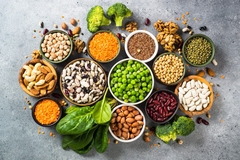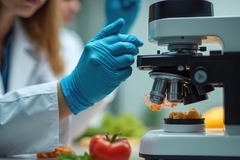
- Industry news
Industry news
- Category news
Category news
- Reports
- Key trends
- Multimedia
- Journal
- Events
- Suppliers
- Home
- Industry news
Industry news
- Category news
Category news
- Reports
- Key trends
- Multimedia
- Events
- Suppliers
SABMiller Reports Strong Rise in Earnings

This strong result for the year has been achieved despite challenging comparative growth rates across a number of markets in the prior year and a substantial rise in input costs for the group as a whole.

15/05/08 SABMiller plc has reported Group lager volumes up 11% to 239 million hectolitres (hl), organic growth of 7%. EBITA up 15%, and 9% on an organic constant currency basis despite rising input costs. Mix benefits and strong pricing improve Miller EBITA in the US. Volume, price and productivity gains drive excellent earnings growth in Europe - EBITA up 30%. Latin America lager volume growth of 5% despite exceptional prior year - EBITA up 17%. Africa organic volumes of lager up 6% - substantial investment programme to capture growth opportunities. CR Snow volume growth continues ahead of the China market - Snow brand up 63%. South Africa lager volumes were level - a satisfactory result given loss of a premium brand
Meyer Kahn, Chairman of SABMiller, said: "This strong outturn to the year is particularly pleasing given the scale of the challenge we faced at its outset, with exceptional prior year comparatives, rising input costs and an increasingly competitive environment in many of our markets. It is a clear testament to the strength of our brands and the group’s operational capability that we have been able to deliver such a good performance."
This strong result for the year has been achieved despite challenging comparative growth rates across a number of markets in the prior year and a substantial rise in input costs for the group as a whole. Total beverage volumes were up 6%, to 288 million hl and total lager volumes were up 11% to 239 million hl, including the impact of acquisitions in China and Europe. A 15% increase in group revenue translated into EBITA growth of 15% to US$4,141 million, or 9% on an organic constant currency basis. This reflects the benefit of price increases, mix improvements and productivity gains, all of which have offset the rise in input costs, in addition to favourable currency rates against the US dollar. The group’s ability to recover these higher costs underlines the strength of its brands and its operational capability in enhancing net revenue per hectolitre through effective control of package mix and portfolio pricing. The group EBITA margin remained level with the prior year at 17.4%. Earnings benefited from currency strength and lower effective tax rates in certain jurisdictions. Adjusted earnings and adjusted earnings per share grew 20% and 19% respectively on the prior year.
During the year, underlying consumer demand in the group’s developing markets has remained strong, with high levels of fixed investment within Africa, Asia and South America contributing to good GDP growth in these regions. Over the course of the year the group has invested some US$1,978 million in additional production capacity, new containers and distribution, to ensure the business will be able to continue to take advantage of the growth in its markets. The group’s premium brand strategy has driven mix benefits across a number of markets, with significant investment behind new product and packaging innovations.
Net cash generated from operations after working capital movements was 6% above the prior year, reflecting an increase in working capital across the group as at 31 March 2008, due principally to the timing of Easter. Gearing increased during the year to 49.7% from 45.8% principally as a result of increased borrowings to fund the acquisition of the Grolsch business and the capital expenditure programme. The Board has recommended a final dividend of 42 US cents per share, which will be paid to shareholders on 7 August 2008. This brings the total dividend to 58 US cents, a 16% increase.
These results demonstrate both the growth momentum in the business and the substantial brand equity resulting from the investment made over many years in the group’s portfolio of some 200 local and regional beer brands.
This has been another year of strong growth for the group. In the current year, volume growth in the first half will be affected by high comparative growth rates, and pressure on input costs will continue to increase although pricing and mix benefits are again expected to compensate for these cost increases. The economic outlook across our global footprint, which is biased towards growth markets in developing countries, remains positive, and we will continue to benefit from the strength of our brands, operational capability and investment for growth.











